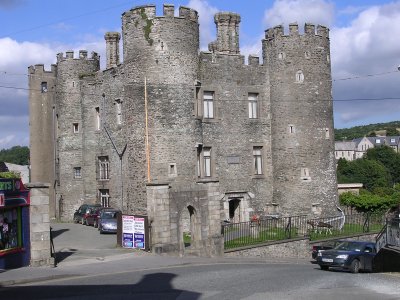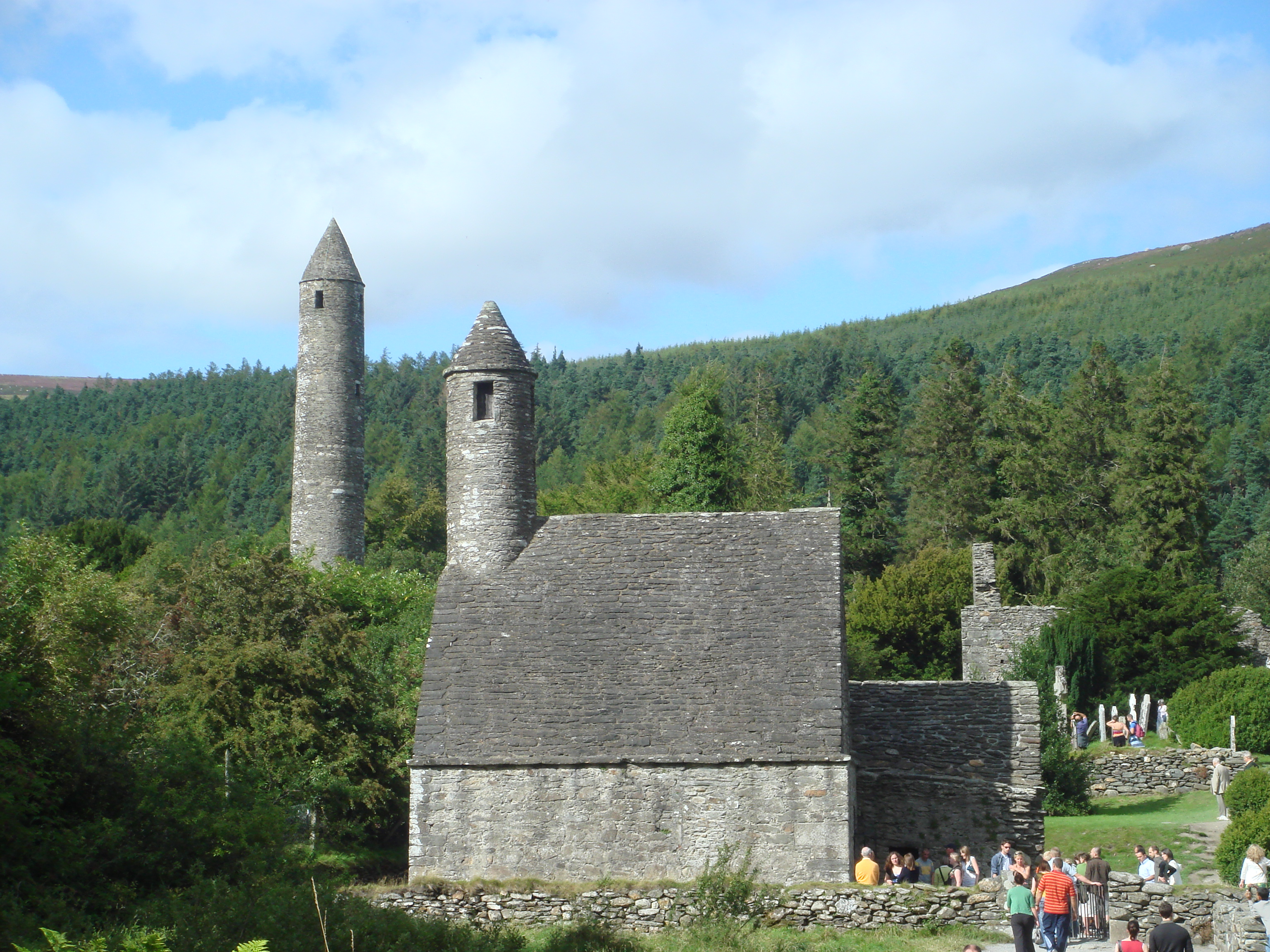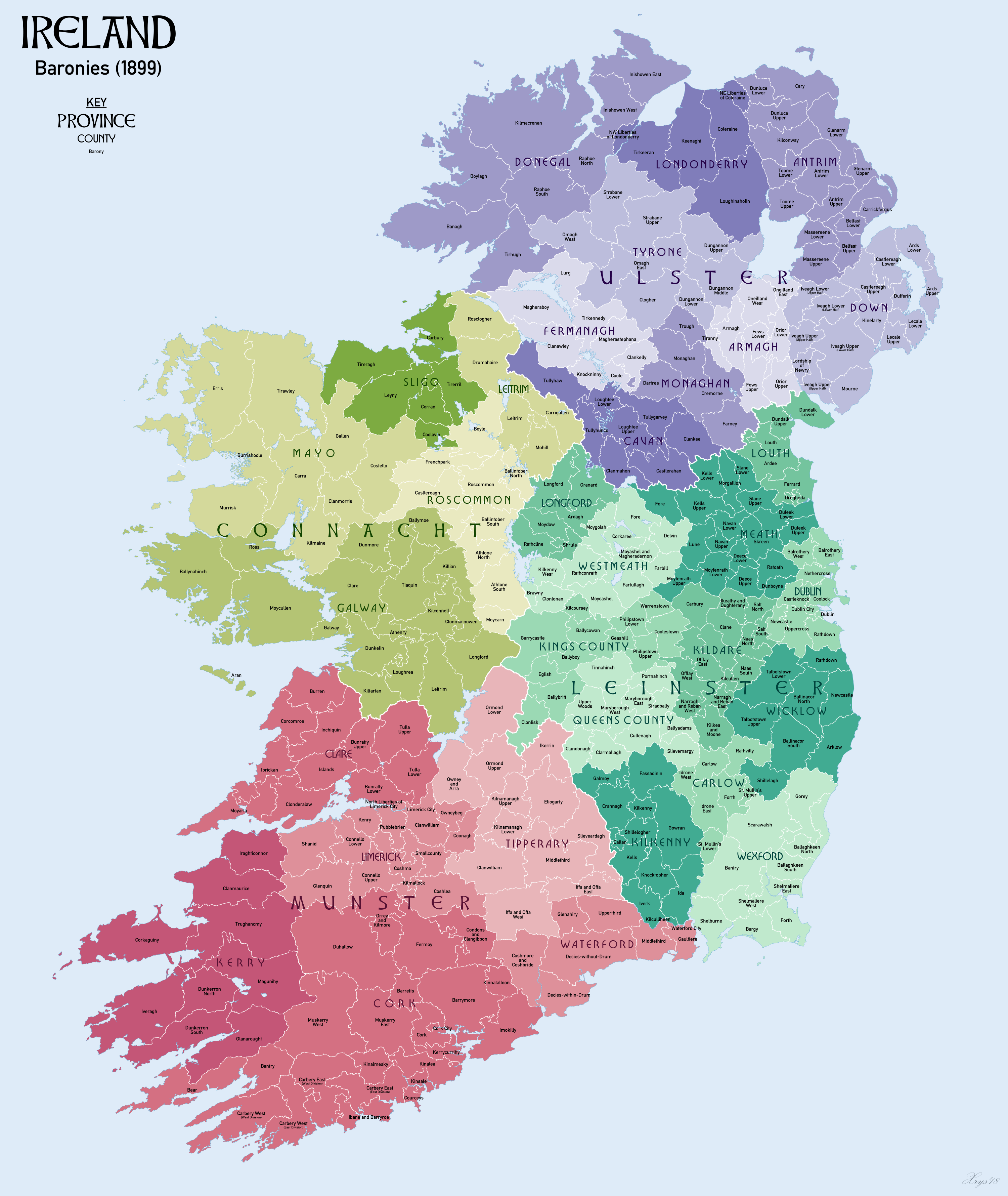|
St. Mullin's Upper
St. Mullin's Upper () is a barony in County Carlow, Ireland. Etymology The original St. Mullin's barony took its name from the village of St. Mullin's (). The area now called St. Mullin's Upper was formerly an exclave until the two parts were separated in 1841. Location St. Mullin's Upper is found in east County Carlow, east of the River Slaney and west of the River Derry. It does not border St. Mullin's Lower. St. Mullin's Upper is bordered to the west by Forth, County Carlow; to the east and north by Shillelagh, County Wicklow; and to the south by Scarawalsh, County Wexford. History Very early this area was referred to as Fearann Uí Néill, or the country of Farren O'Neale, lords of Tully. This may refer to the Uí Néill sept of Magh Dá Chonn in Leinster.http://www.rootsweb.ancestry.com/~irlcar2/parish.htm List of settlements Below is a list of settlements in St. Mullin's Upper: * Clonegal *Kildavin Kildavin () is a small village in County Carlow, Ireland. Sit ... [...More Info...] [...Related Items...] OR: [Wikipedia] [Google] [Baidu] |
Irish Language
Irish (an Caighdeán Oifigiúil, Standard Irish: ), also known as Gaelic, is a Goidelic languages, Goidelic language of the Insular Celtic branch of the Celtic language family, which is a part of the Indo-European languages, Indo-European language family. Irish is indigenous language, indigenous to the Ireland, island of Ireland and was the population's first language until the 19th century, when English (language), English gradually became Linguistic imperialism, dominant, particularly in the last decades of the century. Irish is still spoken as a first language in a small number of areas of certain counties such as County Cork, Cork, County Donegal, Donegal, County Galway, Galway, and County Kerry, Kerry, as well as smaller areas of counties County Mayo, Mayo, County Meath, Meath, and County Waterford, Waterford. It is also spoken by a larger group of habitual but non-traditional speakers, mostly in urban areas where the majority are second language, second-language speakers. ... [...More Info...] [...Related Items...] OR: [Wikipedia] [Google] [Baidu] |
River Derry
The River Derry () is a large river in the southeast of Leinster, Ireland, a tributary of the Slaney. It rises just south of Hacketstown, County Carlow, Ireland. It flows southeast to Tinahely, being accompanied by the R747 regional road for the distance. South of Tinahely it turns sharply and flows southwest through Shillelagh, briefly forming the border between County Wicklow and County Wexford, before becoming the border between County Wexford and County Carlow. It flows under Clonegal Bridge at a point where it divides Clonegal, County Carlow to the west from Watch House Village, County Wexford, to the east. A few kilometres further downstream it flows into the River Slaney The River Slaney () is a large river in the southeast of Ireland. It rises on Lugnaquilla Mountain in the western Wicklow Mountains and flows west and then south through counties Wicklow, Carlow and Wexford for 117.5 km (73 mi), b .... Derry Water River is a separate tribu ... [...More Info...] [...Related Items...] OR: [Wikipedia] [Google] [Baidu] |
Clonegal
Clonegal, officially Clonegall ( ; ), is a village in the southeast of County Carlow, Ireland. It is in a rural setting, close to the border between counties Wexford and Carlow, 5 km from Bunclody, County Wexford and 22 km from Carlow town. It is just over a mile north of where the River Slaney and the River Derry meet. Clonegal has a much smaller "twin" village across the River Derry in County Wexford, Watch House Village. The village is served by a primary school, and is the center of an agricultural hinterland. History Evidence of ancient settlement in the area includes ringfort, bullaun stone and holy well sites in the surrounding townlands of Clonegall, Abbeydown and Huntington. Huntington Castle, also known as Clonegal Castle, is a 17th-century tower house close to the village centre. Built by Laurence Esmonde, 1st Baron Esmonde on the site of an earlier (possibly 15th century) structure, Huntington Castle was further extended in the 18th and 19th c ... [...More Info...] [...Related Items...] OR: [Wikipedia] [Google] [Baidu] |
County Wexford
County Wexford ( ga, Contae Loch Garman) is a Counties of Ireland, county in Republic of Ireland, Ireland. It is in the Provinces of Ireland, province of Leinster and is part of the Southern Region, Ireland, Southern Region. Named after the town of Wexford, it was based on the historic Gaelic Ireland, Gaelic territory of Uí Ceinnselaig, Hy Kinsella (''Uí Ceinnsealaigh''), whose capital was Ferns, County Wexford, Ferns. Wexford County Council is the Local government in the Republic of Ireland, local authority for the county. The population of the county was 149,722 at the 2016 census. History The county is rich in evidence of early human habitation.Stout, Geraldine. "Essay 1: Wexford in Prehistory 5000 B.C. to 300 AD" in ''Wexford: History and Society'', pp 1 - 39. ''Portal tombs'' (sometimes called dolmens) exist at Ballybrittas (on Bree Hill) and at Newbawn — and date from the Neolithic period or earlier. Remains from the Bronze Age period are far more widespread. E ... [...More Info...] [...Related Items...] OR: [Wikipedia] [Google] [Baidu] |
County Wicklow
County Wicklow ( ; ga, Contae Chill Mhantáin ) is a county in Ireland. The last of the traditional 32 counties, having been formed as late as 1606, it is part of the Eastern and Midland Region and the province of Leinster. It is bordered by the Irish Sea to the east and the counties of Wexford to the south, Carlow to the southwest, Kildare to the west, and South Dublin and Dún Laoghaire–Rathdown to the north. Wicklow is named after its county town of Wicklow, which derives from the name ( Old Norse for "Vikings' Meadow"). Wicklow County Council is the local authority for the county, which had a population of 155,258 at the 2022 census. Colloquially known as the "Garden of Ireland" for its scenerywhich includes extensive woodlands, nature trails, beaches, and ancient ruins while allowing for a multitude of walking, hiking, and climbing optionsit is the 17th largest of Ireland's 32 counties by area and the 15th largest by population. It is also the fourth largest ... [...More Info...] [...Related Items...] OR: [Wikipedia] [Google] [Baidu] |
Shillelagh (barony)
Shillelagh () is a Barony (Ireland), barony in County Wicklow, Republic of Ireland. Etymology Shillelagh barony derives its name from the Síol Elaigh, a local people who claimed descent from Élothach mac Fáelchon, and from the village of Shillelagh, County Wicklow, Shillelagh. Location Shillelagh barony is located in southwest County Wicklow. History Derived from Síol Elaigh, meaning descendants of Ealach. O'Dunlaing (O'Dowling) was noted as a chief of Síl n-Elathaig, a branch of the Síl Mella. The Ua Tuathail (O'Tooles) were driven here in the late 12th century, following the Cambro-Norman invasion. http://www.rootsweb.ancestry.com/~irlkik/ihm/baronie3.htm List of settlements Below is a list of settlements in Shillelagh barony: *Carnew *Coolboy *Shillelagh, County Wicklow, Shillelagh *Aghowle Church, Aghowle, a civil parish of the barony References Baronies of County Wicklow {{Wicklow-geo-stub ... [...More Info...] [...Related Items...] OR: [Wikipedia] [Google] [Baidu] |
Forth (County Carlow Barony)
Forth () is a barony in County Carlow, Republic of Ireland. Etymology Forth takes its name from the Irish '' Fortuatha'', a term that described a region ( tuath) not ruled by members of the dominant dynasty of a province. In this case, the region was known as ''Fothairt Mag Feá'', "the ''fothairt'' of the plain of beeches." Location Forth is found in the eastern part of County Carlow. Physical features include the Burren River and Mount Leinster. Forth barony is bordered to the east by St. Mullin's Upper; to the north by Rathvilly; to the west by Idrone East; to the northwest by Carlow (all the preceding baronies are also in County Carlow); to the northeast by Shillelagh, County Wicklow; and to the southeast by Scarawalsh, County Wexford. History Uí Nualláin (O'Nolan) were rulers of Fothairt Mag Feá.http://www.rootsweb.ancestry.com/~irlcar2/Baronies_Carlow.htm List of settlements Below is a list of settlements in Forth barony: *Aghade Aghade () is a small ci ... [...More Info...] [...Related Items...] OR: [Wikipedia] [Google] [Baidu] |
River Slaney
The River Slaney () is a large river in the southeast of Ireland. It rises on Lugnaquilla Mountain in the western Wicklow Mountains and flows west and then south through counties Wicklow, Carlow and Wexford for 117.5 km (73 mi), before entering St George's Channel in the Irish Sea The Irish Sea or , gv, Y Keayn Yernagh, sco, Erse Sie, gd, Muir Èireann , Ulster-Scots: ''Airish Sea'', cy, Môr Iwerddon . is an extensive body of water that separates the islands of Ireland and Great Britain. It is linked to the Ce ... at Wexford town. The estuary of the Slaney is wide and shallow and is known as Wexford Harbour. The catchment area of the River Slaney is 1,762 km2. The long term average flow rate of the River Slaney is 37.4m3/s Towns that the Slaney runs through include Stratford-on-Slaney, Baltinglass, Tullow, Bunclody, Enniscorthy and Wexford. The river is crossed by 32 road bridges and one railway bridge. Wildlife Varied and plentiful wildlife ... [...More Info...] [...Related Items...] OR: [Wikipedia] [Google] [Baidu] |
Barony (Ireland)
In Ireland, a barony ( ga, barúntacht, plural ) is a historical subdivision of a county, analogous to the hundreds into which the counties of England were divided. Baronies were created during the Tudor reconquest of Ireland, replacing the earlier cantreds formed after the original Norman invasion.Mac Cotter 2005, pp.327–330 Some early baronies were later subdivided into half baronies with the same standing as full baronies. Baronies were mainly cadastral rather than administrative units. They acquired modest local taxation and spending functions in the 19th century before being superseded by the Local Government (Ireland) Act 1898. Subsequent adjustments of county boundaries mean that some baronies now straddle two counties. The final catalogue of baronies numbered 331, with an average area of ; therefore, each county was divided, on average, into 10 or 11 baronies. Creation The island of Ireland was "shired" into counties in two distinct periods: the east and sou ... [...More Info...] [...Related Items...] OR: [Wikipedia] [Google] [Baidu] |
Exclave
An enclave is a territory (or a small territory apart of a larger one) that is entirely surrounded by the territory of one other state or entity. Enclaves may also exist within territorial waters. ''Enclave'' is sometimes used improperly to denote a territory that is only partly surrounded by another state. The Vatican City and San Marino, both enclaved by Italy, and Lesotho, enclaved by South Africa, are completely enclaved sovereign states. An exclave is a portion of a state or district geographically separated from the main part by surrounding alien territory (of one or more states or districts etc). Many exclaves are also enclaves, but not all: an exclave can be surrounded by the territory of more than one state. The Azerbaijani exclave of Nakhchivan is an example of an exclave that is not an enclave, as it borders Armenia, Turkey and Iran. Semi-enclaves and semi-exclaves are areas that, except for possessing an unsurrounded sea border (a coastline contiguous with internati ... [...More Info...] [...Related Items...] OR: [Wikipedia] [Google] [Baidu] |
County Carlow
County Carlow ( ; ga, Contae Cheatharlach) is a Counties of Ireland, county located in the South-East Region, Ireland, South-East Region of Ireland, within the Provinces of Ireland, province of Leinster. Carlow is the List of Irish counties by area, second smallest and the List of Irish counties by population, third least populous of Ireland's 32 traditional counties. Carlow County Council is the governing Local government in the Republic of Ireland, local authority. The county is named after the town of Carlow, which lies on the River Barrow and is both the county town and largest settlement, with over 40% of the county's population. Much of the remainder of the population also reside within the Barrow valley, in towns such as Leighlinbridge, Bagenalstown, Graiguenamanagh, Tinnahinch, Borris, County Carlow, Borris and St. Mullins, St Mullins. Carlow shares a border with County Kildare, Kildare and County Laois, Laois to the north, County Kilkenny, Kilkenny to the west, County ... [...More Info...] [...Related Items...] OR: [Wikipedia] [Google] [Baidu] |






